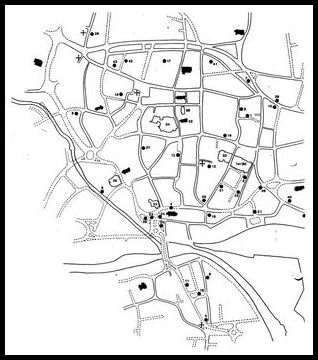Ipswich 1974-1990 Excavation Archive
Suffolk County Council Archaeological Service, 2015. (updated 2020) https://doi.org/10.5284/1034376. How to cite using this DOI
Data copyright © Suffolk County Council Archaeological Service unless otherwise stated
This work is licensed under the ADS Terms of Use and Access.
Primary contact
Suffolk County Council Archaeological Service
Bury Resource Centre
Hollow Road
Bury St Edmunds
IP32 7AY
Resource identifiers
- ADS Collection: 1644
- DOI:https://doi.org/10.5284/1034376
- How to cite using this DOI
Overview

This dataset consists of the Ipswich Backlog Archive general (ie not site specific) information including the project history, site and archive databases and specialist reports which are available via the ‘Downloads’. on the menu to the left. This data forms part of a project to disseminate the consolidated archive of the internationally significant excavations in Ipswich town centre between 1974 and 1990 in order to provide a web-based resource for future research proposals.
A total of 36 major archaeological interventions (on 34 IAS reference sites) took place between 1974 and 1990. The datasets for the 34 sites are available from individual project pages accessed via the links in the 'Site List' on the menu to the left.
The archive associated with the the project in general consists of the following files:
- Reports
- There are 22 documents available including documents concerning the project history and the specialist reports that cover multiple sites. These include the Project Designs, description of the archive and recording systems, accounts of the history of excavation in Ipswich, the chronological system and specialist reports on pottery (imports and local), coins, hones, Anglo-Saxon strap-ends, environmental remains, animal and fish bones and buildings.
- Images
- There are 176 finds X-ray images available which were not catalogued but relate to the Ipswich sites.
- Spreadsheets
- There are 10 spreadsheets available, 7 of them are part of the environmental report (Murphy 2004), 2 list the digital reports and one summarises the radiocarbon results.
- Databases
- The tables from two databases are available, and a separate table of metadata for the IAS_Coredata tables. IAS_Coredata contains the site and finds data for all 34 sites. Ipswich Archive catalogues contains lists of the full documentary archive for the 34 sites and some related material held by Suffolk County Council.
- GIS
- The GIS shapefiles, available as 7 zip files, consist of the following layers: churches, modern streets, old streets (survived), river, site extents, number divisions and core names. These provide an overall context for the urban core and the key to the site numbering.
All of these files are available from the 'Downloads' page.






